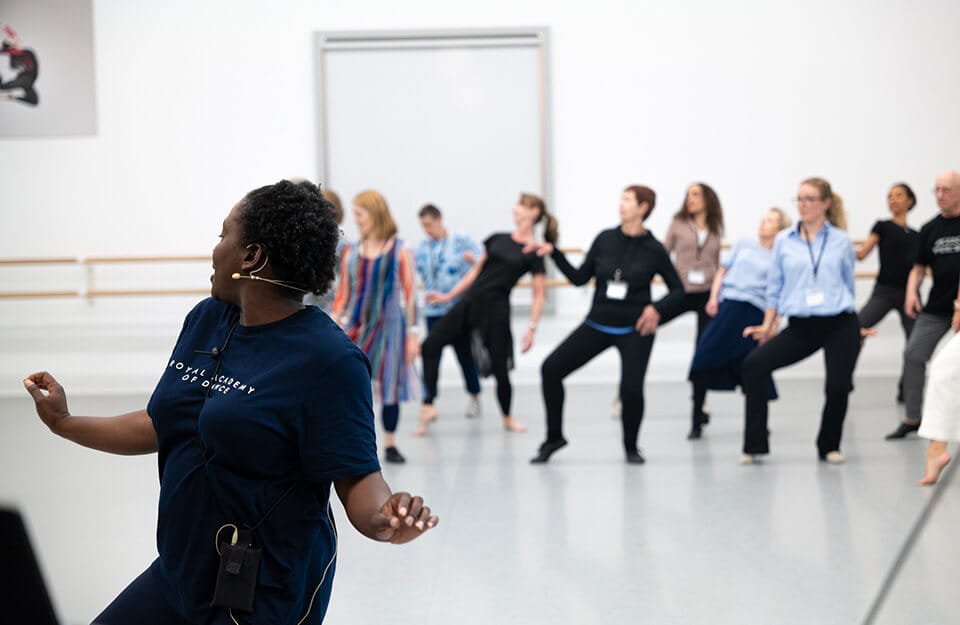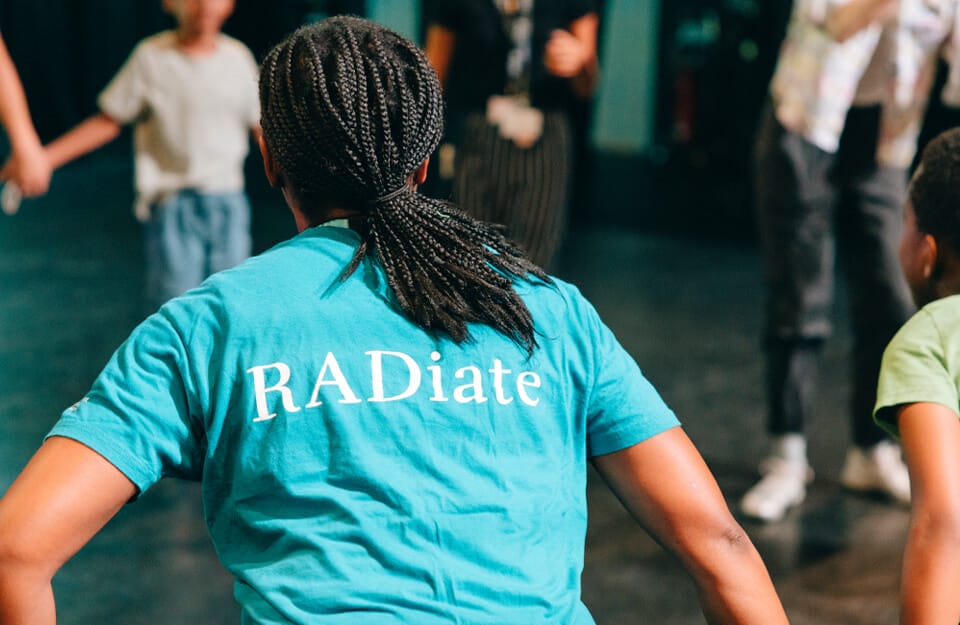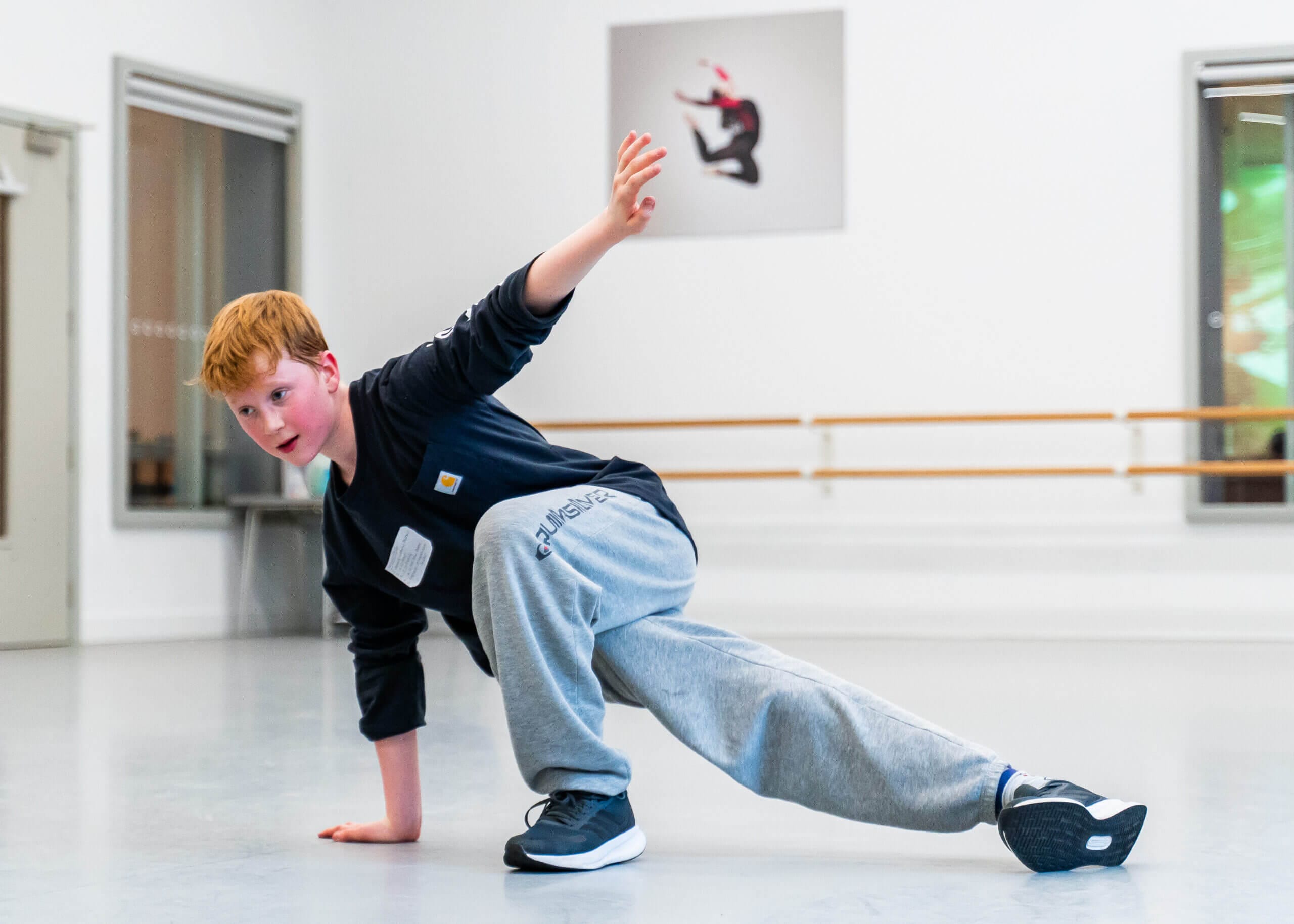Building communities through in-person, in-studio, shared learning

In an increasingly digital world, the value of in-person, in-studio, shared learning has never been more significant. Whether it’s a weekly technique class, a dance teacher training session, or a professional development workshop, these shared spaces are more than just places to learn dance — they are sites of connection, creativity, and community.
The dance studio is not just a room with mirrors. It’s a place where knowledge is co-created, where in-person learning together is shaped by dialogue and shared experience. Whether you’re a student or a teacher, beginner or experienced, being part of a learning community has lasting impact — on your growth, your practice, and your wellbeing.
Why learning together matters
Gone are the days when the dance class was a one-way street — the teacher instructs, and the students quietly follow. Today’s best teaching practice recognises that dance is learned most effectively when it is shared in-person. In a studio setting, students and teachers alike benefit from a more collaborative, participatory approach.
Recent research by Naomi Smart, ballet teacher and researcher in the field of Sociolinguistics at King’s College, London, indicates that in these environments, learners form knowledge communities — groups of people committed to a shared goal, developing skills together, and supporting one another through the process. This applies not only to children in a creative dance class, but also to adults training to become dance teachers, and to professionals developing new specialisms or pedagogical approaches. She states:
“The days of a one-to-many ‘transmission’ teaching model (reference 1), with students offering little input and completely silent for the entirety of the hour session, are undoubtedly behind us. With ever-expanding research, we’re beginning to recognise the significant benefits of a more collaborative approach in our classrooms and studios, and in particular the benefits of learning in a community.
When learning together, research has found that students form unique social bonds – they create ‘knowledge communities whose common property is different’ from those they already belong to (2). These knowledge communities see members working towards focused tasks, developing specific abilities, and honing particular skills, with a shared commitment to a common goal central to this activity.”
The studio as a social learning space
Dance classes — especially when taught in person — offer far more than physical training. They foster a sense of belonging, trust, and mutual respect. These social bonds enhance learning, motivation, and confidence, and provide a framework for emotional and personal development.
For younger students, in-person learning as part of a group supports key life skills: communication, empathy, resilience, and cooperation. Teachers who nurture a sense of community in the studio help children to grow not only as dancers, but as confident, connected individuals. Naomi’s research recognises these benefits for children:
“For younger learners, learning within a supportive knowledge community can increase emotional literacy, being found to improve both self-management and relationship skills (3). These are skills which students can take into their life beyond the dance class, benefiting them in a range of settings as they grow and develop.
In addition, studies into the benefits of peer learning in community contexts for children found that these knowledge communities can become self-sustaining. Students learning in a group reward context (in which students were given feedback as a whole, collective unit) were found to aid and help one another with a greater frequency than those students learning in an individual reward setup (4).
The interpersonal skills developed in community learning are clear, and as instructors, we are in a position to facilitate this positive growth for our students.”
For adult learners, particularly those in teacher training or continuing professional development (CPD), in-person group learning provides vital peer support. It encourages reflection, sparks new ideas, and helps combat the isolation that can sometimes come with freelance or independent teaching careers. Research into community learning for older and adult learners has unveiled a wealth of benefits for this age group too:
“Initially, the sense of ‘social connectedness’ forged in supportive group contexts has been identified as a ‘significant, positive predictor of perceived health and well-being’ (5) – learners in encouraging communities experience positive effects on their mental health, with isolation being a key driver of poor mental health for many (6). Indeed, when asked about their motivations for involvement in learning activity, adults noted as a key factor the social benefits of being involved in a group (7).
When adults come together in community, their tendency towards ‘problem-centered’ learning (8) makes collaborative and long-term involvement ideal. In fact, theorist Bannon hails a process-based mode of instruction for adult dance learners specifically, calling for a focus on learning through ‘ongoing processes rather than only as the result of product-focused gains (9). These are the kinds of inclusive, developing processes that we can provide our adult learners to ensure that they are getting the most out of their time in the dance class.”
From teacher training to everyday teaching
When training to become a dance teacher, the studio becomes a shared space — a place to try, reflect, fail safely, and grow. Engaging with others on the same path builds confidence and resilience, offering fresh perspectives and shared wisdom.
But this doesn’t stop once formal training ends. Experienced teachers benefit from continuing to learn in-person — with and from others. CPD in a community setting encourages reflection, sparks new ideas, and fosters a sense of shared purpose. It reminds teachers that they are part of something larger — a network of passionate professionals continually evolving together.
Creating and sustaining knowledge communities
Knowledge communities don’t just happen — they are built with intention. Dance teachers are in a unique position to nurture these environments. Whether they’re leading a syllabus class, training the next generation of teachers, or developing their own skills, they can choose to foster connection and collaboration as part of their teaching.
This doesn’t mean less rigour — it means more engagement. More room for curiosity, questions, and co-creation. When students feel safe to contribute, supported to try, and recognised as part of a learning community, they thrive. And when teachers work together, the whole profession rises.
The power of in-person, in-studio learning
At its heart, dance is a communal art form. We move together. We learn together. And when we invest in that togetherness — in-person, in the studio, in training, and in ongoing learning — we unlock the full potential of what dance education can be.
In-person learning is more than a format — it’s a philosophy. One that reminds us that the studio is not just where dance teaching happens, but where relationships, communities, and futures are built.
If you want to stay ahead in the dance industry, CPD is not just an option – it’s essential. The Royal Academy of Dance (RAD) offers a variety of activities and content, from webinars and in-person workshops to longer events that allow you to network with other dance professionals from around the world. RAD’s annual CPD event in July provides sessions open to everyone, offering a chance to enhance your skills, grow your network, or find renewed inspiration. RAD members receive exclusive discounts on all RAD CPD.
References
(1) Sööt, A., & Viskus, E. (2014). Teaching dance in the 21st century: A literature review. p.1193. The European Journal Of Social & Behavioural Sciences, eISSN : 2301-2218.
(2) Giguere M. (2024). Impact of the Group on Dance Learning and Creation: A Cognitive and Social Perspective Literature Review. Journal of Dance Education. pp. 1-12.
(3) Payne, H., & Costas, B. (2021). Creative Dance as Experiential Learning in State Primary Education: The Potential Benefits for Children. p. 281. Journal of Experiential Education, 44(3), 277-292. https://doi.org/10.1177/1053825920968587
(4) Webb, N. M. (1982). Student Interaction and Learning in Small Groups. p.436. Review of Educational Research, 52(3), 421–445. https://doi.org/10.2307/1170424
(5) Erfani, S.S., Abedin, B., & Blount, Y. (2016). Social Support, Social belongingness, and Psychological Well- Being: Benefits of Online Healthcare Community Membership. p.4. Pacific Asia Conference on Information Systems.
(6) How community involvement and Social Connections Aid Mental Health Recovery (no date) bridgesupport. Available at: https://bridgesupport.org/how-community-involvement-and-social-connections-aid-mental-health-recovery/
(7) Arsenault, N., Anderson, G., & Swedburg, R. (1998). UNDERSTANDING OLDER ADULTS IN EDUCATION: DECISION-MAKING AND ELDERHOSTEL. pp.107-8. Educational Gerontology, 24(2), 101-114. https://doi.org/10.1080/0360127980240201
(8) Knowles, M., 1973. The Adult Learner: A Neglected Species. p. 47. Houston: Gulf Pub. Co.
(9) Bannon, F. (2010). Dance: the possibilities of a discipline. Research in Dance Education. p. 50. 11(1), 49-59, doi: 10.1080/14647890903568313




